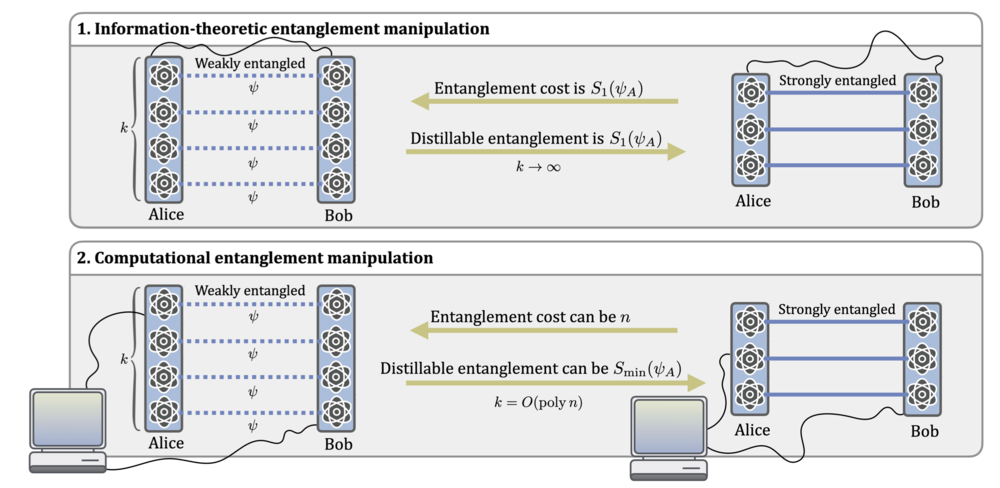Surprising Discovery in Quantum Physics
New study reveals “cultural gaps” in modern quantum theory
№ 164/2025 from Oct 22, 2025
Quantum researchers in the twenty-first century are part of an international network that requires a great deal of interaction and communication. Around one hundred publications on the topic are produced every day, often by authors who work in close collaboration with one another. New developments and discoveries are quickly integrated into the field, usually within a matter of just a few weeks. Researchers immediately proceed to build on these findings with innovative ideas. That is what the day-to-day life in the field of quantum theory looks like as it celebrates the one-hundredth anniversary of the initial development of quantum mechanics. In honor of this milestone, UNESCO has declared 2025 the International Year of Quantum Science and Technology. One of the latest discoveries in this special year comes from an international research group led by quantum physicist Jens Eisert, professor at Freie Universität Berlin. The group’s surprising findings have made a significant contribution to scientists’ understanding of quantum entanglement. Their study, “Entanglement Theory with Limited Computational Resources,” was recently published in the scientific journal Nature Physics. The article shows that, in practice, the established method used to measure correlations in quantum mechanics might not function exactly as was previously assumed.
Exciting research questions often emerge at points of contact between fields, as Professor Jens Eisert’s new study indicates.
Image Credit: Jens Eisert
In the 1920s physicists laid the groundwork for quantum mechanics, which has since become a fundamental theory in physics. Quantum theory aims to explain the behavior of matter and light at the smallest scale, such as that of atoms and photons. Unlike in classical physics, these particles can exist simultaneously in different states and can be “entangled” with one another over vast distances. Entanglement theory is a central aspect of quantum mechanics and has paved the way for many modern technological advances, like computer chips, lasers, and quantum computers. It has also been instrumental in the development of secure communication and the understanding of quantum materials.
Until recently, it was a common assumption among scientists that entangled quantum states could be preserved and manipulated effectively in laboratory settings while performing completely general quantum operations with no other constraints than locality. Recent research suggests, however, that the practical applications of quantum entanglement, particularly in quantum computing, are more limited than previously believed. This can be attributed to computational constraints, even when conditions are ideal. “For a long time our understanding of entanglement was built upon idealized assumptions,” says Eisert. “Our work now shows that fundamental discrepancies arise in key quantum computing measurements when they are performed under realistic, which is to say efficient, conditions.”
This realization has led the team of researchers to introduce two key figures of merit in quantum physics: the computational distillable entanglement and the computational entanglement cost. These two figures quantify rates of entanglement in quantum states, in the form of entangled bits (ebits), within certain restricted conditions.
The study could fundamentally change scientists’ understanding of how quantum information is processed and emphasizes the importance of considering computational resources in performing these tasks. In addition, it presents a potential new solution for current problems surrounding efficiency in quantum computing – beyond just mere hardware issues. This approach forges a new link between theoretical computer science, which deals with the complexity and difficulty of computational operations, and physics, which attempts to understand nature.
Eisert also notes that their results point to a certain contradiction in quantum theory that has hitherto gone unnoticed. “It seems that two important research fields did not communicate enough with one another, namely, entanglement theory experts and quantum algorithm experts,” he says. Precisely this kind of exchange is at the heart of their current work, which highlights that exciting research questions often emerge at these points of contact between fields, or as Eisert puts it, “In the ‘cultural gaps’ or along the tectonic fault lines of established knowledge. Quantum theory is no exception here.”
Further Information
Publication
Leone, L., Rizzo, J., Eisert, J. et al. “Entanglement Theory with Limited Computational Resources,” Nature Physics (2025), https://doi.org/10.1038/s41567-025-03048-8.
Contact
Prof. Dr. Jens Eisert, Department of Physics, Dahlem Center for Complex Quantum Systems, Freie Universität Berlin, Email: jense@fu-berlin.de

